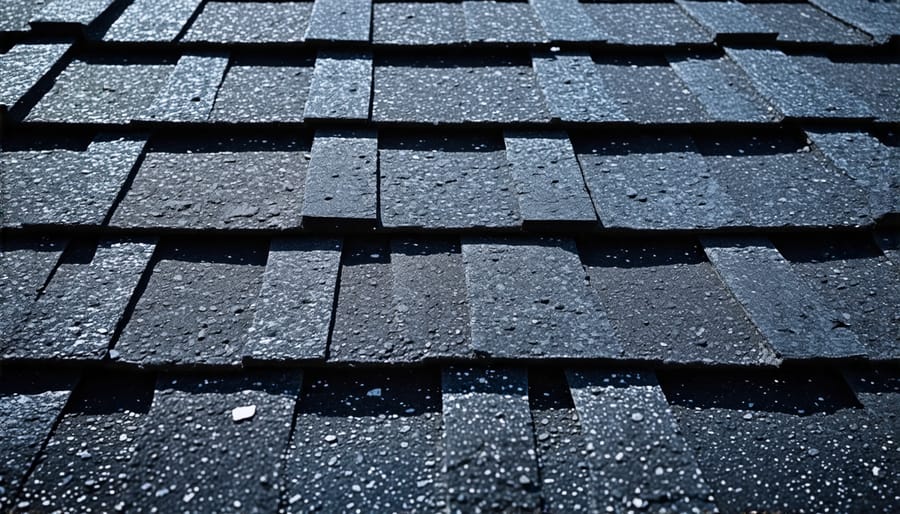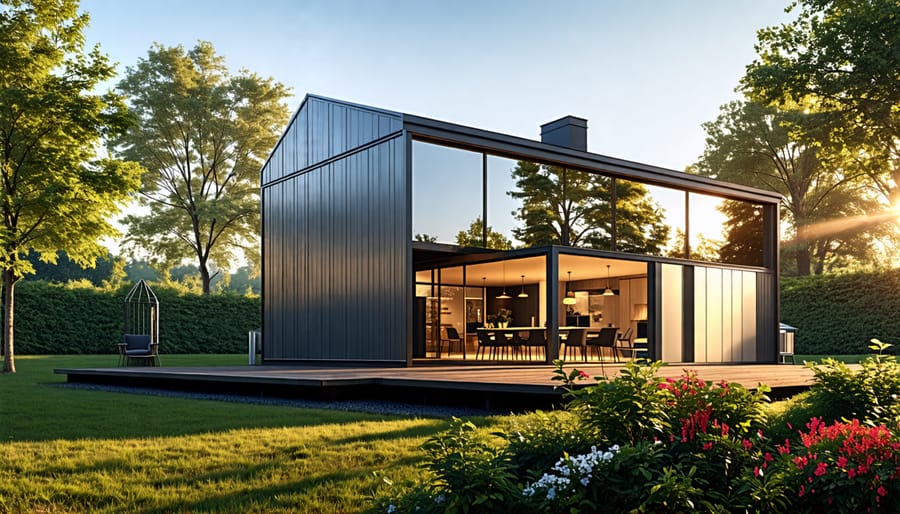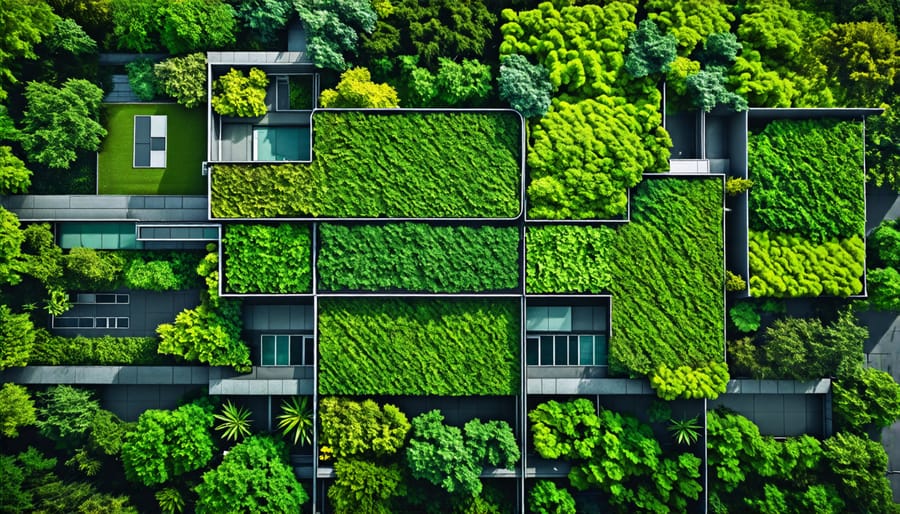Protect your home and the planet by installing eco-friendly roofing materials. Eco-friendly roofing options like metal, clay tiles, recycled shingles, and green roofs offer durability, energy efficiency, and reduced environmental impact. Metal roofs are long-lasting, recyclable, and reflect heat to lower cooling costs. Clay tiles are natural, fire-resistant, and provide excellent insulation. Recycled shingles transform waste materials into attractive, affordable roofing. Green roofs with vegetation absorb rainwater, improve air quality, and create wildlife habitats. Investing in sustainable roofing protects your biggest asset while contributing to a greener future.
Recycled Shingles
Rubber Shingles
Rubber shingles, made from recycled tires, are a unique and eco-friendly roofing option. These durable shingles not only divert waste from landfills but also offer a distinctive, textured appearance that can add character to your home or shed. Rubber shingles are lightweight, easy to install, and provide excellent resistance to impact, wind, and fire. They also offer superior insulation properties, helping to keep your interior spaces comfortable and energy-efficient. With a lifespan of up to 50 years or more, rubber shingles are a long-lasting, low-maintenance choice that can help you reduce your environmental footprint while enhancing the look of your roof.

Plastic/Composite Shingles
Plastic and composite shingles provide an eco-friendly roofing solution that makes use of recycled materials. These innovative shingles are crafted from a blend of recycled plastic and wood fibers, offering a durable and sustainable alternative to traditional asphalt shingles. By repurposing plastic waste, these shingles help reduce the amount of material ending up in landfills. They come in a variety of colors and styles to suit your home’s aesthetic, while providing excellent protection against the elements. Plastic and composite shingles are lightweight, easy to install, and require minimal maintenance, making them a practical choice for environmentally conscious homeowners looking to upgrade their roofing.

Metal Roofing
Steel Roofing
Steel roofing is an increasingly popular eco-friendly option, offering durability, energy efficiency, and recyclability. Made from highly recycled materials, steel roofs can last 50 years or more, reducing waste from frequent replacements. They reflect heat, keeping your home cooler in summer and lowering energy bills. Steel’s fire resistance adds an extra layer of protection. At the end of its long life, steel roofing is 100% recyclable, making it a sustainable choice. While more expensive upfront than asphalt shingles, steel’s longevity and energy savings can offset the cost over time. With a variety of colors and styles available, steel roofing combines eco-friendliness with attractive curb appeal.
Aluminum Roofing
Aluminum roofing is an excellent eco-friendly choice for your home or shed. Its lightweight nature puts less stress on the structure, making installation a breeze. You’ll love how aluminum stands up to the elements, resisting corrosion from rain, snow, and salt air. This durability means your roof will look great and protect your space for decades with minimal maintenance. Plus, aluminum roofing is 100% recyclable at the end of its long life, making it a sustainable option you can feel good about. For a roof that’s both easy on the environment and your home, consider the lasting benefits of aluminum.
Clay and Slate Tiles
Clay and slate tiles are natural roofing materials that offer exceptional durability and longevity. Made from abundant earthen materials, these tiles are an environmentally friendly choice for homeowners seeking a sustainable roofing solution. Clay tiles, crafted from fired clay, can last up to 100 years with proper care and maintenance. Their natural thermal properties help regulate indoor temperatures, keeping your home cooler in summer and warmer in winter. This energy efficiency can lead to reduced heating and cooling costs, making clay tiles an economical long-term investment.
Slate, a metamorphic rock known for its strength and resilience, is another eco-friendly roofing option. With a lifespan of up to 150 years, slate tiles are virtually indestructible and require minimal maintenance. Their low water absorption rate makes them resistant to frost damage and leaks, ensuring a weathertight roof for decades. Both clay and slate tiles have low embodied energy, meaning the energy used in their production is relatively low compared to other roofing materials. They are also recyclable at the end of their life span, further reducing their environmental impact.
In addition to their practical benefits, clay and slate tiles add a touch of natural beauty to any home. Their timeless appearance complements various architectural styles, from traditional to modern. Whether you’re installing a new roof on your house or building a garden with plants/vegetation, clay and slate tiles offer a sophisticated and sustainable roofing solution that will protect your property for generations to come.
Green/Living Roofs

Benefits of Green Roofs
Green roofs offer numerous environmental advantages. They absorb rainwater, reducing runoff and preventing urban flooding. The vegetation filters pollutants, purifying the water before it reaches local waterways. These living roofs also combat the urban heat island effect by cooling the air through evapotranspiration. They create vital habitats for birds, butterflies, and beneficial insects in urban areas.
Beyond eco-benefits, green roofs extend the lifespan of the underlying waterproofing membrane by shielding it from UV rays and temperature fluctuations. The additional insulation lowers energy costs, keeping buildings cooler in summer and warmer in winter. Aesthetically, green roofs transform stark rooftops into lush, inviting spaces for relaxation or urban agriculture. While they require professional installation and ongoing maintenance, the long-term environmental and building benefits make green roofs an appealing choice for eco-conscious homeowners looking to create a healthier, more sustainable urban environment.
Maintaining a Green Roof
Maintaining a green roof requires regular care to keep plants healthy and thriving. Water your green roof during dry spells, ensuring even moisture distribution. Trim and weed as needed to prevent overgrowth and remove invasive species. Inspect the drainage system periodically to avoid clogs and standing water. Annually, assess plant health, replace dead or struggling vegetation, and apply organic fertilizer for optimal growth. Monitor for pests or diseases, addressing issues promptly. With proper upkeep, your green roof will continue to provide eco-friendly benefits and natural beauty to your home or shed for years to come.
Conclusion
Eco-friendly roofing materials offer homeowners an opportunity to make a positive impact on the environment while enhancing the functionality and appeal of their homes. From energy-efficient metal roofs to sustainable green roofs, there are numerous options available to suit various preferences and budgets. By choosing an eco-friendly roof, you can reduce your carbon footprint, lower energy costs, and contribute to a healthier planet. As you plan your next roofing project, consider the long-term benefits of these sustainable materials. Not only will you be making a responsible choice for the environment, but you’ll also be investing in a durable, low-maintenance solution that can provide lasting value to your home. Embrace the power of eco-friendly roofing and join the growing movement towards a greener future, one roof at a time.





Leave a Reply